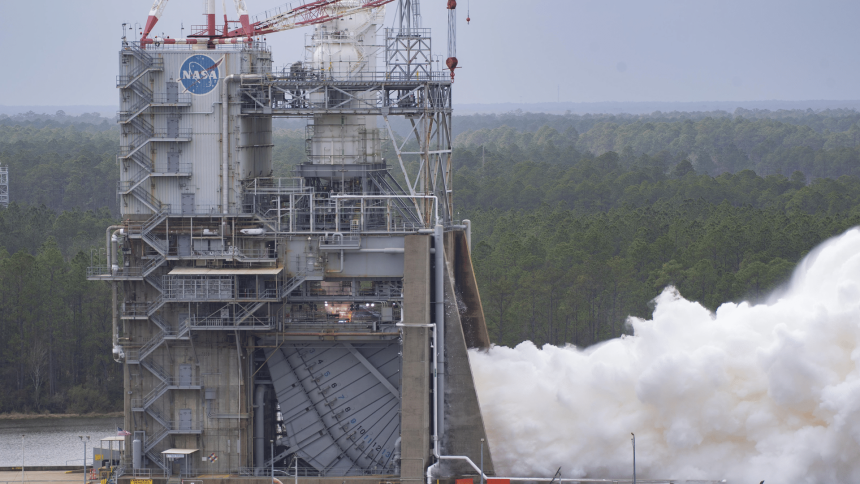The Stennis Space Center has begun testing NASA’s newly redesigned RS-25 engine near Bay St. Louis for future flights of the Space Launch System (SLS) rocket.
The engine underwent its first hot fire test of the year on Wednesday, taking the first step in a series of testing that supports the production of new RS-25 engines by lead SLS engine contractor Aerojet Rocketdyne.
Within the past few months, the Stennis Space Center has contributed to the successful takeoff of the Artemis I rocket in November.
Now, the new engines are expected to help power future Artemis missions to the moon, beginning with Artemis V.
The single-engine hot fire on the Fred Haise Test Stand followed a confidence test in 2022, which tested whether all was ready to proceed with the certification series.
During the latest test, engineers fired the RS-25 engine for a full duration of about eight and a half minutes, the same amount of time the engines must operate to help power SLS to space.
The RS-25 engine also operated at 111% power for most of the test, the same level needed to help lift SLS to orbit.
The test featured a range of new components, most of which were installed for the December hot fire. One additional component – a new nozzle – was installed prior to the most recent hot fire.
Four RS-25 engines fire simultaneously to generate a combined 1.6 million pounds of thrust at launch and 2 million pounds of thrust during ascent to help power each SLS flight. NASA and Aerojet Rocketdyne modified 16 engines remaining from the Space Shuttle Program, which were proven flightworthy at Stennis for Artemis missions I through IV.
Every RS-25 engine that will help power SLS will be tested at Stennis. RS-25 tests at the site are conducted by a combined team of NASA, Aerojet Rocketdyne, and Syncom Space Services operators.








